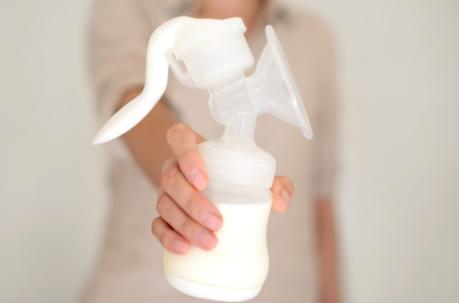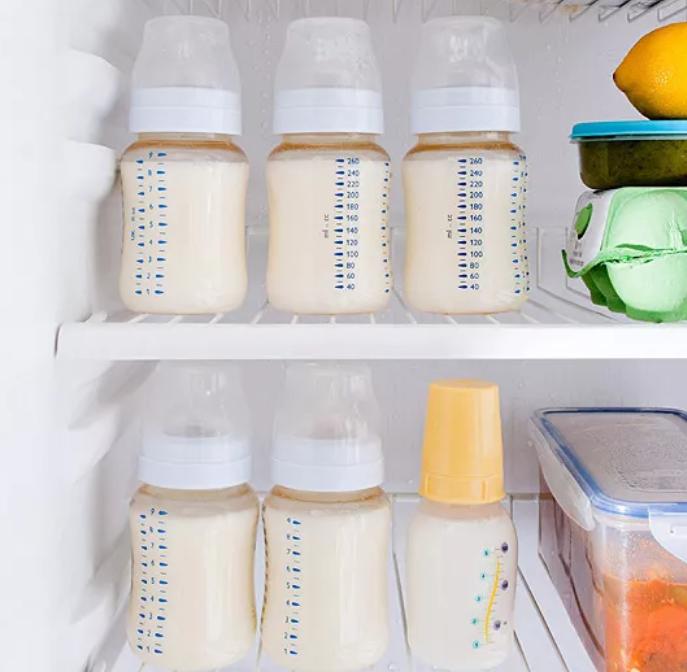Breastfeeding can be both a rewarding and challenging journey, especially for new moms. While breast pumps have revolutionized the feeding experience, manual breast pumps stand out for their portability, quiet operation, and affordability. Unlike electric pumps, manual pumps give mothers more control over the suction and pace, allowing for a customized and comfortable pumping session. If you’re considering a manual breast pump, learning how to use a manual breast pump effectively will make a big difference in your pumping experience. This guide offers essential tips and a step-by-step approach to help you feel confident and comfortable with a manual breast pump. From setup to storage, we’ll walk you through everything you need to know to get started and ensure a smooth, productive pumping routine that fits seamlessly into your life.

Why Choose a Manual Breast Pump?
Choosing the right breast pump can feel overwhelming, but a manual pump offers unique benefits. One significant advantage is control; you can adjust the suction and rhythm to what feels most natural, reducing the likelihood of discomfort. Unlike electric pumps, manual pumps don’t require batteries or a power source, making them perfect for on-the-go use and travel. They’re lightweight, compact, and quiet, allowing for discreet pumping whenever needed.
Additionally, manual pumps are often more affordable than electric options, making them an excellent choice for moms on a budget or those who only pump occasionally. They are easy to clean, with fewer parts than electric pumps, simplifying the process and making them ideal for busy mothers. With a manual pump, you can feed your baby anywhere and anytime without dependency on an outlet. For mothers looking for simplicity, affordability, and flexibility, a manual breast pump is a valuable addition to your breastfeeding routine.
How to Prepare for Pumping: Setup Essentials
Preparation is key to a comfortable and efficient pumping experience. Here’s what you need to know before starting.
Gathering the Right Equipment and Supplies
Start by gathering all necessary supplies. Besides the manual pump, have clean bottles or storage bags ready for collected milk. You’ll also need a clean towel or wipes for any spills, a comfortable chair, and possibly a blanket for warmth. Many moms find a breastfeeding cover helpful if privacy is a concern, especially when pumping in shared spaces.
Finding a Comfortable Pumping Space
A relaxed environment is essential. Look for a quiet, comfortable space where you can sit upright with back support. This setup not only prevents muscle strain but also promotes milk flow. If you’re at home, set up in a private area where you can feel at ease. When you’re on the go, a car or private room can work well.
How to Warm Up and Prepare for Pumping
Gently massage your breasts or use a warm compress for a few minutes before pumping. This can help stimulate milk flow and make pumping more comfortable. Breathing exercises and shoulder rolls are also helpful for relaxation. A comfortable and stress-free setup lays the groundwork for an effective pumping session.
Step-by-Step Guide: Using Your Manual Breast Pump
Once you’re prepared, using your manual breast pump can be straightforward. Follow these steps to make the most of each session.
Positioning the Pump for Optimal Comfort and Efficiency
Begin by holding the pump flange firmly against your breast to create a secure, airtight seal. Positioning the flange correctly is crucial—align the flange so your nipple is centered within it, ensuring that it moves freely without friction. This alignment helps milk flow freely while minimizing discomfort. Take a moment to find a comfortable position for both yourself and the pump, as this will reduce the need to readjust during pumping. If your flange isn’t fitting properly, consider checking if different flange sizes are available, as using the right size can make a big difference in both comfort and milk output.
Adjusting the Suction and Pumping Rhythm
Start with gentle squeezes on the pump handle to initiate milk flow, mimicking the natural sucking pattern of a nursing baby. This gentle rhythm often helps stimulate the initial letdown. As milk flow begins, you can gradually increase the intensity of the suction to a level that feels comfortable yet effective. Remember, there’s no need to rush; finding a consistent, comfortable pace will be more productive. If your hand tires, take a short break or switch hands to maintain efficiency without strain. Over time, you’ll find a rhythm that best suits you and optimizes your milk production.
Monitoring Milk Flow and Volume
Pay close attention to the milk flow and how much you’re collecting in the bottle. Some moms prefer to alternate breasts every 5-10 minutes to stimulate milk flow on both sides equally. This method can help balance milk supply and reduce any uneven fullness. When milk flow naturally slows, or when you feel you’ve collected enough, switch to the other breast, repeating the steps to encourage additional flow. To complete the session, gently massage your breast to release any remaining milk, maximizing the amount collected and ensuring breast comfort.
Tips for Comfortable and Efficient Pumping
A few additional tips can make pumping more comfortable and effective.
Finding the Right Rhythm for Efficient Pumping
Every mom’s body is unique, so experimenting with different rhythms can help you find the most efficient and comfortable pace. Some moms prefer quick, gentle pumps at first, followed by slower, more deliberate pumps. Listening to your body and adjusting your technique can improve efficiency.
Avoiding Common Discomforts with a Manual Pump
Manual pumps can cause discomfort if used incorrectly. Avoid pressing the pump too hard against your breast, as this can create soreness. Taking short breaks during pumping sessions can also reduce hand fatigue. Using a hand support or cushion under your arm might help relieve pressure and maintain comfort.
Staying Relaxed and Hydrated During Pumping Sessions
Stress can inhibit milk flow, so try deep breathing or listen to soothing music during your session. Staying hydrated also supports milk production. Keep a bottle of water nearby and drink regularly to stay hydrated and relaxed.
How to Clean and Store Your Pump Properly
Proper cleaning and storage are essential for your pump’s hygiene and longevity. After each use, disassemble the pump and rinse each part with warm, soapy water. Use a small brush to clean hard-to-reach areas. Once clean, rinse thoroughly and let all parts air dry on a clean towel. For storage, keep all pump parts in a clean, dry place. If you’re using the pump on the go, consider a travel case for added protection. Periodically, sterilize the pump parts by boiling them in hot water or using a sterilizing solution to prevent bacteria buildup. Proper care of your pump will ensure safe and effective use for many sessions to come.

Conclusion
Using a manual breast pump may seem challenging at first, but with practice, it can become a convenient part of your routine. By following these tips and techniques on how to use a manual breast pump, you’ll quickly master the art of pumping and providing nourishing breast milk for your baby. Remember that each session is a step toward making the process easier and more comfortable. With patience and the right tools, a manual breast pump can become a reliable companion on your breastfeeding journey.
FAQ
What’s the best way to stimulate milk flow with a manual pump?
Gently massaging your breasts and using a warm compress before pumping can help stimulate milk flow. Some moms find starting with quick, light pumps also encourages letdown, which can lead to a smoother session.
How often should I use a manual breast pump as a new mom?
The frequency of pumping depends on your needs. If you’re exclusively pumping, you may need to pump every 2-3 hours. For occasional use, once or twice a day may be sufficient. It’s best to work with a lactation consultant to create a schedule that aligns with your breastfeeding goals.
Can I use a manual breast pump on both breasts simultaneously?
Manual pumps are typically designed for one breast at a time. If you prefer double pumping, consider using two pumps simultaneously or alternating between breasts to balance milk flow.
